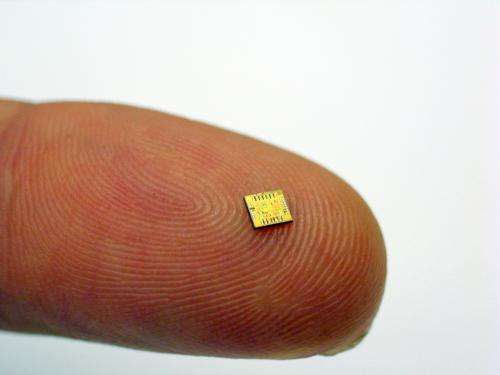A medical lab for the home

Fraunhofer FIT demonstrates a mobile wireless system that monitors the health of elderly people in their own homes, using miniature sensors. Besides non-invasive sensors this platform integrates technology to take a blood sample and to determine specific markers in the patient's blood. At its core is the home unit, a compact device located in the patient's home. It incorporates the necessary software as well as sensors and the analytical equipment.
For years, cardiac diseases have been the most important cause of death globally. Mobile assistance systems that monitor vital parameters, e.g. blood pressure or heart rate, of risk patients in their homes could make their lives safer and more satisfying. A platform supporting this kind was developed and tested by researchers from Fraunhofer FIT, the Berlin Charité, T-Systems and several international partners.
Besides non-invasive sensors this platform integrates technology to take a blood sample and to determine specific markers in the patient's blood while the patient is at home. At its core is the home unit, a compact device located in the patient's home. It incorporates the necessary software as well as sensors and the analytical equipment. Wearable sensors for measuring vital parameters can be linked to the home unit, e.g. a pulse oximeter with a Bluetooth module in the patient's ear or a blood pressure monitor that sends its data to the system via WLAN. Using a nanopotentiostat, an electrochemical sensor, the system can measure the patient's glucose, lactate or cholesterol level. In addition, a fluorescence sensor using a laser diode captures the concentration of several cardiac markers.
To detect the risk-indicating markers in the blood, the patient uses a cartridge that she fills with a drop of blood from a prick in her finger. The cartridge is equipped with a microchip and also specially designed, so that the markers in the blood can be detected. "Miniaturized sensors in the home unit, which can detect traces of the markers down to the nano level, analyze the blood sample", says Professor Harald Mathis, head of the department 'Biomolecular Optical Systems' of the Fraunhofer Institute for Applied Information Technology FIT.
The home unit aggregates the sensor data and sends the results to the patient's doctor or a medical center via secure Internet connection. A smartphone app presents the health data and the physician's feedback to the patient.
Provided by Fraunhofer-Gesellschaft



















